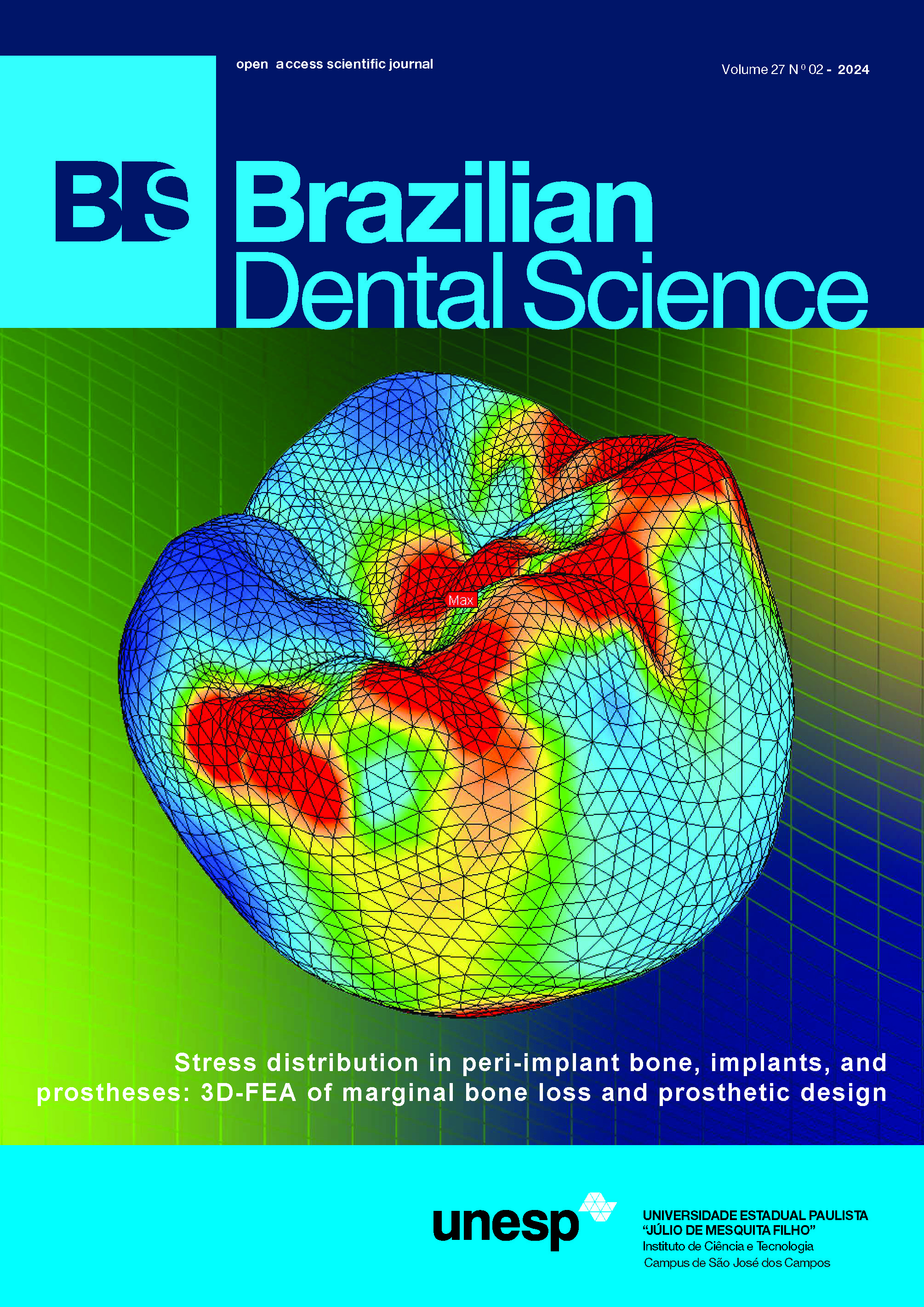Dimensional accuracy of provisional complete crown made by the 3D printing method
DOI:
https://doi.org/10.4322/bds.2024.e4366Resumo
Objective: This study evaluated the dimensional accuracy of provisional complete crowns printed with photopolymerizable resin using an LCD-type 3D printer through optical metrology, varying the printing angle and the number of complete crowns printed at once on a single-build platform. Material and Methods: The complete crowns were printed with temporary crown resin, A2 temporary (Wilcos do Brasil), divided into four groups with n=12: Group A - 3 complete crowns positioned at 150° on the x-axis; Group B - 4 complete crowns positioned at 150° on the x-axis; Group C - 3 complete crowns positioned at 180° on the x-axis; and Group D - 4 complete crowns positioned at 180° on the x-axis. Dimensional accuracy was assessed by overlaying images in the Gom Inspect measurement software, where the STL of each complete crown was aligned and compared to the master model. For statistical analysis, one-way ANOVA and Shapiro-Wilk tests were used. Results: No significant statistical difference was observed between the different angles, or the number of complete crowns printed at once. Conclusion: Based on dimensional accuracy, the printing of provisional complete crowns with an LCD-type 3D printer shows no significant statistical difference with either the 150 or 180-degree angle variations, and there is also no difference when printing 3 or 4 complete crowns at once.
KEYWORDS
CAD-CAM; Dental crowns; Dental prosthesis; Prosthodontics; 3D printing.
Downloads
Downloads
Publicado
Como Citar
Edição
Seção
Licença
TRANSFERÊNCIA DE DIREITOS AUTORAIS E DECLARAÇÃO DE RESPONSABILIDADE
Toda a propriedade de direitos autorais do artigo "____________________________________________________________________" é transferido do autor(es) para a CIÊNCIA ODONTOLÓGICA BRASILEIRA, no caso do trabalho ser publicado. O artigo não foi publicado em outro lugar e não foi submetido simultaneamente para publicação em outra revista.
Vimos por meio deste, atestar que trabalho é original e não apresenta dados manipulados, fraude ou plágio. Fizemos contribuição científica significativa para o estudo e estamos cientes dos dados apresentados e de acordo com a versão final do artigo. Assumimos total responsabilidade pelos aspectos éticos do estudo.
Este texto deve ser impresso e assinado por todos os autores. A versão digitalizada deverá ser apresentada como arquivo suplementar durante o processo de submissão.




























